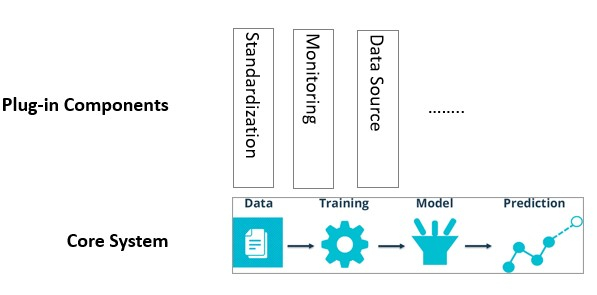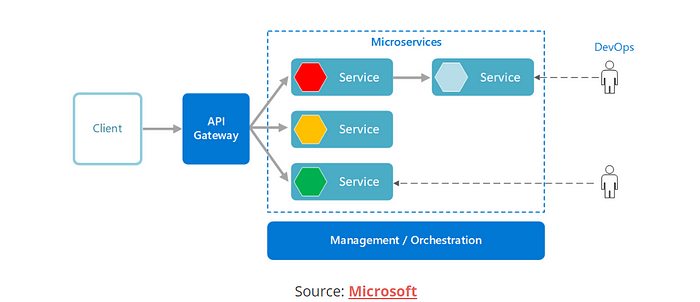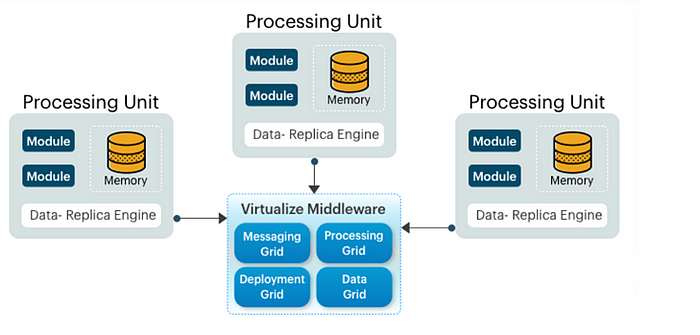5 Best Software Architectural Patterns You Must Know About
For practically every human action, the world is becoming more reliant on software. Software systems have infiltrated and eased many facets of human existence.
From mobile applications, we use to connect with people to life-sciences applications and deep learning models, to finance technology systems to smart buildings that employ technology to automate numerous functions.
To give the desired solutions, these software systems must be developed with the proper architecture to produce optimal results.
A pattern is a context-specific solution to a problem.
An architectural pattern is a generic, reusable solution to a frequent problem in software architecture within a specific environment.
Software flaws have a substantial influence on an organization’s business. The primary cause of any software failure is the selection of incorrect software architectural patterns. Companies frequently begin the application development process without a formal architecture in place.
However, they frequently overlook the fact that the lack of an architectural design can force the developing team to choose a typical pattern with no guidelines. They eventually end up with protocols that lack clear roles, duties, and interdependence.
Let’s take a quick example,
An online banking application, would not necessitate a complicated design such as the microservices paradigm. It is simple to create a client-server architecture for retrieving requests. However, without this planning, the application may become complex, with no way to go back or risk losing a significant investment in the restructuring process.
In this post, we will look at what software architectural patterns are and give a detailed explanation of some of them. Remember that in a single system, you can use many patterns to optimize each portion of code with the best design.
Even though it’s called computer science, it’s frequently an art.
Let’s hope on to what exactly software architectural patterns are.
What are App Architecture Patterns?
Consider a software project involving the development of a marketplace app.
To create this app, you must first establish its design and architecture, as these will serve as the core pillars upon which the remainder of the app will be created. For example, how would the services be exchanged or payment integration will work? How will you employ an algorithm to recommend vendors’ services? The list goes on and on.
The known patterns for handling these challenges were limited a few decades ago. However, software development has progressed to the point that we now have a plethora of architectural patterns that offer specific advantages for various app types.
Software architectural patterns are recurring solutions to general software engineering problems. In the grocery app concept we outlined before, we can reuse already specified algorithms for product suggestions and change them to meet the needs of our app.
The software architecture used to implement the recommendations module is merely one component of the overall architectural pattern.
Now that we know what a software architectural pattern is, let’s look at why we should apply it.
Why one should apply software architectural design patterns?
Here are three top reasons a software development company must apply software architectural design patterns while creating any app or software.
1. Build more optimal systems:
By using architecture patterns, we may create transferrable models that can be reused, so contributing to a scalable, extensible, and optimized structure.
2. Early design modifications:
Depending on the pattern used, most architecture patterns enable for changes to be made in the early stages of development, resulting in a flexible and robust core architectural pattern that is error-free.
3. Communication among stakeholders:
A software architecture pattern is a basic abstraction of a system that system stakeholders can use to mutually comprehend, negotiate, reach consensus, and communicate.
Now that we’ve established the significance of software architectural patterns, let’s look at five popular software architectural design patterns and where they might be used in development.

5 Best Software Architectural Design Patterns
Let’s look at a few popular software architectural patterns that have helped many software companies to develop apps and software:
1. Layered Software Architecture
As the name implies, the components (code) in this design are divided into layers of subtasks and stacked one on top of the other. This is perhaps the most frequent strategy because it is usually constructed around the database, and many commercial applications naturally lend themselves to storing information in tables.
This is almost a self-fulfilling prophecy. Many of the most popular and best software frameworks, like Java EE, Drupal, and Express, were designed with this structure in mind, and as a result, many of the applications built with them naturally have a layered architecture.
This layer is sometimes referred to as ‘N-tier architecture.’ This design contains four layers in total.

- The Presentation layer: It is the user interface layer where we can see and enter data into an application.
- The business layer: It is a layer responsible for executing business logic as per the server request.
- Application layer: This is the layer that serves as a bridge between the ‘presentation layer’ and the ‘data layer.’
- The data layer: It is the layer that has a database to manage data sets.
When should layered software architecture be used?
Layered architecture is popular for a variety of reasons. You can think about it in terms of the following scenarios/requirements:
- When you want to create an app rapidly with fewer Devs.
- Applications that rely heavily on maintainability and separation of concerns as architectural cornerstones.
- Enterprise applications must adhere to conventional IT structures and processes.
A layered software architectural pattern is ideal for:
- Amazon-style e-commerce web application development.
- Desktop applications in general.
2. Microkernel Software Architecture
A plug-in software architectural pattern is another name for the microkernel software architectural pattern. It is commonly used by software teams when developing systems with interchangeable components. The microkernel pattern consists of two basic components.
- The core system handles the application’s basic and simplest operations.
- The plug-in modules handle the additional functionality and specialized processing.

Assume you have successfully developed a chat application. And the app’s core functionality is that you can text with individuals all over the world without needing to connect to the internet. If, after some time, you want to add a voice messaging feature to the application, you have done it so effectively. Because the microkernel pattern allows you to add features as plug-ins, you can add that feature to an already established program.
When should microkernel architecture be used?
- Applications have a clear division between fundamental routines and higher-order rules.
- Applications have a fixed set of core routines and a dynamic collection of rules that must be updated on a regular basis.
- It is ideally suited for distributed development teams.
A microkernel software architectural pattern is ideal for:
- Product-based applications and scheduling applications.
- Enterprise application because of its adaptability, scalability, and portability.
3. Event-Driven Software Architecture
Event-Driven Architecture is a flexible method in which software services or operations are triggered by events.
So, what exactly is an event?
When a user performs an action in an EDA-built application, a state change occurs and a reaction is generated, which is referred to as an event.
Data travels from one layer to the next in a predetermined order in the layered pattern. In contrast, an event-driven architecture paradigm enables application modules to respond to specific events as they occur. Event-driven patterns are classified into two types: mediator topology and broker topology.
When should we use the event-driven architecture pattern?
- The event-driven pattern is best suited for asynchronous data flow systems in applications.
- Event-driven patterns are scalable and extendable. We can add new modules without altering the present system.
- This pattern could be used by developers to create sophisticated applications that require flawless data flow or applications that will gradually grow.
An event-driven software architectural pattern is ideal for:
- Building JavaScript websites and e-commerce websites in general.
4. Microservices Software Architecture
The microservices software architectural patterns build small independent programs that communicate with one another in order for the full system (application) to function. Each microservice has its own specific responsibilities, and teams can work on them independently of one another.

The only thing they have in common is communication. As microservices communicate with one another, you must ensure that messages passed between them are backward-compatible.
When an application is created in a microservices style, adding new features and updating current microservices without affecting other microservices is no longer an issue. Modules that use microservices patterns are loosely connected. As a result, they are simple to comprehend, modify, and scale.
When should we use the microservice architecture pattern?
- Microservices, without a doubt, work best for teams wishing to rewrite their monolithic systems in a more sustainable way.
- Microservices are best suited for applications with massive and quickly expanding data systems.
- Development teams that are dispersed across the globe.
A microservice software architectural pattern is ideal for:
- Websites with a modest number of components and corporate data centers with clearly defined borders, such as Netflix.
5. Space-based Architecture
The space-based software architectural pattern was created primarily to address and overcome scalability and concurrency difficulties. It’s also a good design pattern for applications with changing and unpredictable concurrent user volumes. By removing the central database limitation and instead leveraging replicated in-memory data grids, high scalability is obtained.

The space-based architecture is intended to minimize functional collapse under high load by distributing processing and storage over numerous servers.
When should we use the space-based architecture pattern?
- For applications and software systems that handle a high volume of concurrent database access or writing.
- For applications that must deal with scalability and concurrency difficulties.
A space-based software architectural pattern is ideal for:
Suited for developing e-commerce or social websites like YouTube.
Choose What’s Best For You
Other architecture patterns, such as the model-view-controller pattern, the blackboard pattern, the broker pattern, and the event-bus design, are also useful in various parts of software development.
The basic concept is the same for everyone: defining the fundamental qualities of your application, improving product functionality, and increasing the speed and productivity of the app-building process.
With this blog, our goal was to help you understand the basics of software architectural patterns and which applications they are most suited for so that you may select the one that best meets your software requirements.
Do reach us out if you are new to architecture patterns and want to construct custom software or applications.
